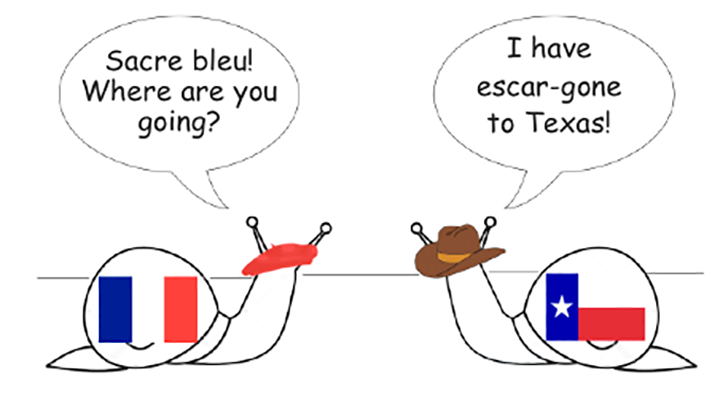Texan tries French delicacy first time

Most people may have a bucket list of things they want to do before they die. I have a bucket list solely dedicated to foods I want to try.
On the top of that list was escargot. Slimy little land creatures that bubble up and die if ever met with salt. They are also the epitome of French cuisine, a small cooked snail that is usually served as an appetizer and is considered a delicacy among the French, as well as in many other European countries.
Le Politique, located on 110 San Antonio St. in Austin, serves Burgundy escargot as an appetizer in their three-course meal with the entrée being Parisian gnocchi followed by the dessert chévre blancmange, for a total of $35. If one is to purchase escargot separately, for $10 one can get six deshelled snails cooked in garlic butter with a sliced baguette. They are served in a special plate that has six individual divots, one for each snail. A special fork is provided that is only about four inches long with three prongs and is curved to help scoop up the snail.
People have been eating snails for thousands of years. Our earliest record comes from the Romans by way of the oldest surviving cookbook, “Apicius,” who had a recipe for land snails. The French are the largest consumers, reaching more than 40,000 metric tons a year. Traditionally, in French cuisine, the snails are purged to remove undesirable contents, removed from their shells to be cooked, then placed back into the shell where they are served with butter sauce. The proper way to eat escargot is to hold the shell with a napkin or grip them with snail tongs and use the snail fork to extract the meat, then dip the meat in butter, place on a slice of bread and enjoy.
After watching multiple YouTube videos in preparation on how to eat these snails, I was eager to practice my skills. Once I had placed my snail on the slice of bread, I was met by a juicy, buttery, chewy, and extremely hot nugget of meat.
Fair warning, please wait until it has cooled a bit, the roof of my mouth is still recovering from that mistake. The meat was cooked in garlic butter, which when paired with the bread, became more about the texture of the snail rather than the flavor — because all I really tasted was garlic butter.
If you’ve ever tried any type of mollusk, like mussels — or if you have been to the U.K., cockles — it has a similar texture. After the initial taste of the butter sauce goes away, one is left with a bit of a gritty aftertaste that reminded me of oysters. However, it was not unpleasant, and after the first chew it got softer and I could appreciate how savory it was.
Like so many other delicacies in the U.S., immigrants brought this treat to our country.
Around the 1850s, escargot first arrived to California and were sold in markets. An important fact is that not all snails are edible. The only species that can be eaten are the Roman snail, the European snail and the garden snail, which are the same ones that can be found in your garden.
People believe that some of the snails escaped and quickly invaded the area. This led to people trying to grow them on their own to sell for the growing demand. However, snails can be carriers of deadly diseases if raised in poor environments or cooked improperly. Over time, regulations were put in place to avoid improper handling.
Today the U.S. only has one USDA-certified snail farm located in New York— Peconic Escargot.
Was it intimidating to eat something that I know produces slime, requires a high level of skill to cook properly and looks like something I might find in my own garden? Yes, yes it was.
But my sense of adventure was stronger and, luckily for me, my stomach and I are always ready to try and learn about a new culture through their food.
